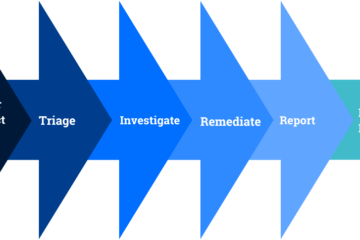Welcome to the world of telecommunications, where staying connected 24/7 is crucial in our interconnected society. The telecom industry relies on a complex infrastructure involving satellites, internet providers, mobile phones, cloud services, and IoT devices to keep us connected. However, this widespread adoption also makes telecom companies a prime target for cybercriminals.
With cyberattacks on the rise, telecom companies face significant threats that can jeopardize the security of millions of customers’ sensitive information. These attacks can lead to data breaches, identity theft, and even espionage by nation-sponsored groups. In this article, we’ll explore some of the most pressing threats facing telecom companies and discuss ways to mitigate these risks.
The diverse range of services offered by telecom companies also brings about an array of cyber risks. Denial of Service attacks, malware infections, and ransomware incidents are just some of the major threats facing the industry. Let’s take a look at some recent examples:
- ShellClient RAT
In July 2021, a sophisticated malware called ShellClient, a Remote Access Trojan (RAT), was discovered targeting aerospace and telecom companies globally. This highly evasive malware, attributed to the Iranian group MalKamak, has been active since 2018.
- LightBasin (aka UNC1945)
An Iranian hacking group known as LightBasin infiltrated 13 telecom operators to gather sensitive information such as subscriber data and call metadata. This activity, which started in 2016, was disclosed in October 2021.
- LAPSUS$
T-Mobile fell victim to multiple breaches by the cybercrime group LAPSUS$ in March 2022, resulting in the theft of proprietary source code. This attack highlights the ongoing threat of data theft and ransomware in the telecom sector.
- Macaw ransomware
Sinclair Broadcast Group faced a ransomware attack by the Russian group Evil Corp in November 2021, underscoring the persistent threat of ransomware targeting telecom companies.
- Vermilion Strike
A sophisticated threat called Vermilion Strike, targeting specific industries including telecom, was discovered by Intezer’s research team. This threat poses a significant risk to telecom companies, emphasizing the need for robust cybersecurity measures.
As telecom networks continue to evolve, they remain a prime target for cyber attacks seeking to exploit vulnerabilities and disrupt communications. The industry faces a growing number of threats, particularly as 5G technology expands, presenting new challenges for cybersecurity teams.
Telecom companies must be vigilant in monitoring and responding to cybersecurity threats, leveraging new technologies and automation to enhance their defenses against evolving threats. By understanding the motivations behind attacks and staying ahead of potential threats, telecom companies can safeguard their operations and protect their customers’ data.
Stay tuned as we delve deeper into the realm of telecom cybersecurity and explore strategies to fortify defenses against emerging threats.
With the landscape of telecom cybersecurity constantly evolving, organizations must adapt and strengthen their security posture to combat emerging threats effectively. By prioritizing proactive security measures and investing in cutting-edge technologies, telecom companies can mitigate risks and ensure the resilience of their networks.
What’s Next?
As telecom organizations enhance their security strategies and embrace automation to bolster their defenses, the fight against cyber threats continues. Join us in our journey to explore the latest advancements in telecom cybersecurity and discover how you can safeguard your organization in an ever-changing digital landscape.




